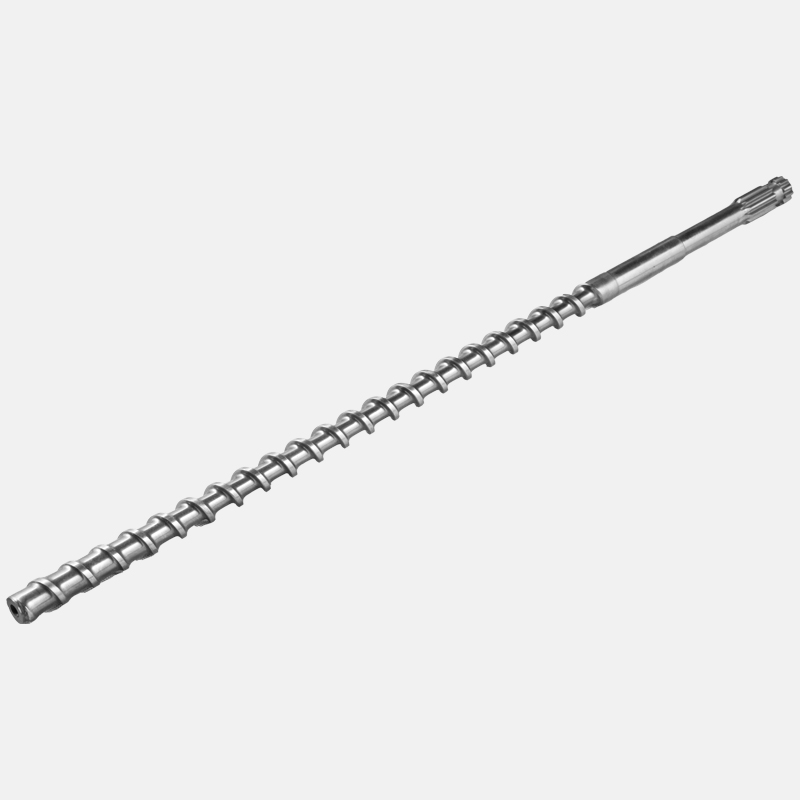A plastic extruder is composed of different components. Each part has specific functions and must work efficiently. For example, the screw must be able to create a high level of friction at the screw surface and barrel wall in order to improve the intake of slippery, hard plastics. Another feature of an extruder is the ability to generate high pressure at the feed inlet or end of the feed zone. Pressure generated at the feed inlet or end helps improve the output rate of the extruder. This pressure is generated by a powered feed device or by the weight of the material over the feed inlet.This type of extruder has two main types: single and dual-screw configurations. Depending on the material type, these two extruder configurations may be used in the same process.
Single screw barrel for injection molding machine
Heat treatment: Nitriding treatment, Bimetallic coating for abrasion
Applicable Industries: Manufacturing Plant, Machinery Repair Shops, Plastic Machinery
Product type:
For different plastic screw can be used: ordinary type, pin type, barrier type, separation type, exhaust type.
However, when considering the benefits of each, make sure to discuss your needs with the manufacturer of the machine.Low-friction
single screw barrel screws are a type of screw that is designed to supplement opposing frictional forces. These screws are characterized by their low coefficient of friction, which makes them ideal for a variety of applications. The screw's flight material is composed of particles that are insulate against the barrel wall and a feed screw. The feed screw is usually filled to capacity, while the rear barrel is empty. As the screw turns, the material passes through the feed section and is heated by heaters. Once the temperature of the barrel reaches a certain point, the material forms a melt film on the barrel's surface.
High friction along the barrel and low friction along the screw's rotating shaft help to convey the material forward. The polymer slips past the screw, but does not rotate with it, so it exits the barrel at a rate that supports the line speed. To supplement opposing frictional forces, the barrel is grooved and low-friction-coated to increase metering and consistency.The screw is an important part of a plastic extruder. It conveys, melts, and forces the material through the die in a continuous process. The screw's design and geometry are key factors in determining the extrusion process. Depending on the polymer and desired temperature, the screw may be single or multi-lobed. The screw drive is powered by an electric motor, which is matched to the speed and power requirements of the process.Heating in a single screw barrel extruded polymer is an important part of the process for producing high-quality plastic products.
The heat produced in the barrel contributes to the melting or softening of the polymer. However, the temperature must be applied for an adequate period of time to be effective.Heat related problems limit screw speed and production rate. The temperature in the barrel is usually maintained with the help of electric heaters. The heaters may be equipped with channels for cooling water. Heating in a single screw barrel extruder may reduce the number of components and improve production efficiency.A single screw barrel extruder consists of a hollow cylindrical barrel with external heaters. The inside of the barrel is lined with a hard metal liner. Screw flights may also be coated with a hard wear alloy. The screw design and geometry depend on the material and desired thermal condition. The screw itself is driven by an electric motor through a gear reducer to control its speed.

 English
English 简体中文
简体中文 España
España عربى
عربى








